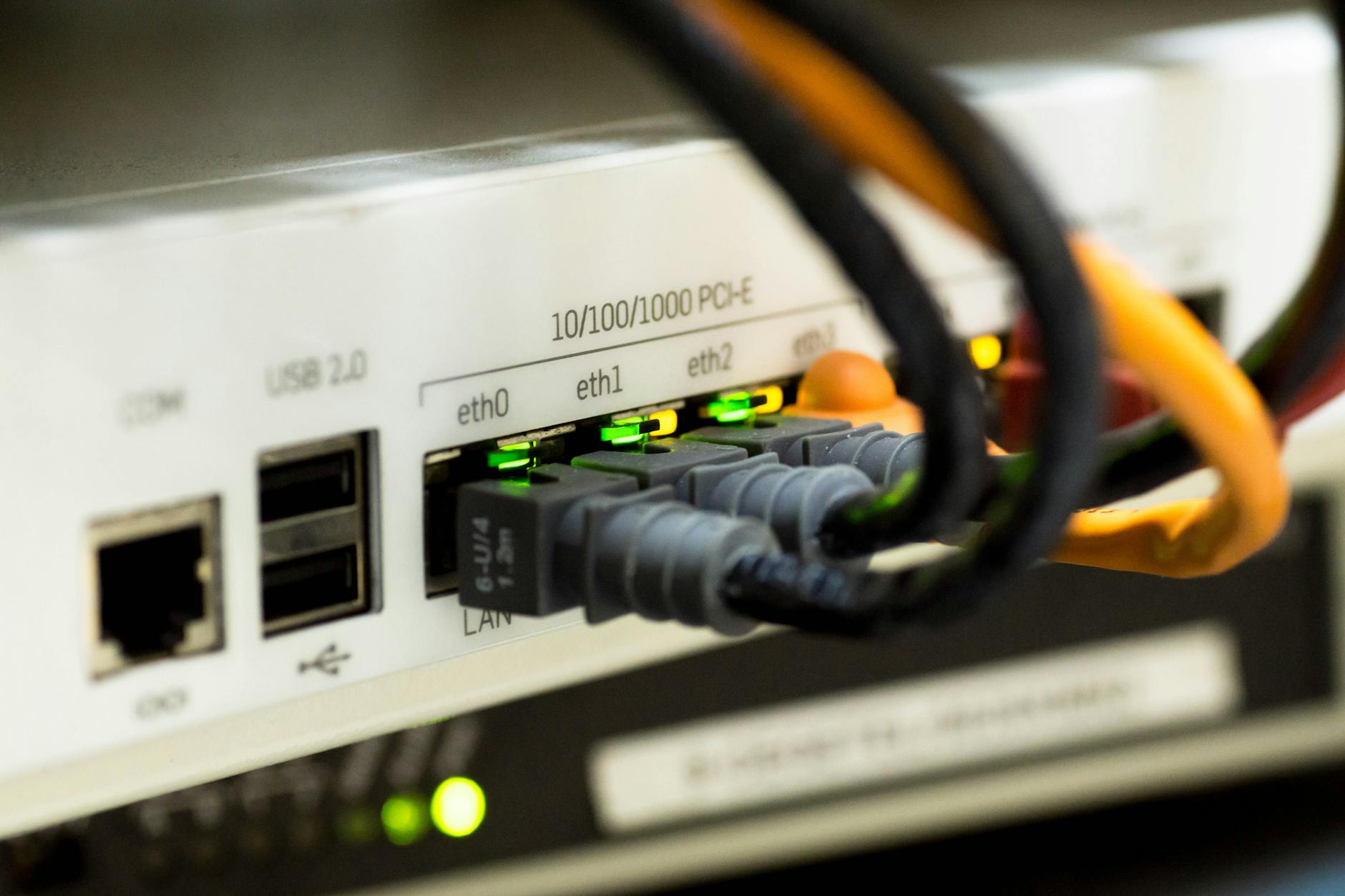How to Add devices to Aruba Central
How to Add devices to Aruba Central

Have you ever found yourself struggling to manage your network devices efficiently? In today’s fast-paced digital world, keeping track of multiple devices can be a daunting task. But what if there was a solution that could simplify this process and make your life easier? 🤔
Enter Aruba Central – a powerful cloud-based network management platform that’s revolutionizing the way we handle device management. Whether you’re an IT professional or a business owner, adding devices to Aruba Central can streamline your operations and boost productivity. But how exactly do you go about adding these devices? 🚀
In this comprehensive guide, we’ll walk you through the step-by-step process of adding devices to Aruba Central. From understanding the basics to exploring alternative methods and post-addition configurations, we’ve got you covered. So, let’s dive in and discover how you can harness the full potential of Aruba Central to simplify your network management!
Understanding Aruba Central

What is Aruba Central?
Aruba Central is a cloud-based network management and monitoring platform designed to simplify the deployment, configuration, and management of wireless, wired, and WAN infrastructure. It provides a unified, single-pane-of-glass interface for IT administrators to oversee their entire network ecosystem.
Benefits of using Aruba Central
Aruba Central offers numerous advantages for organizations:
- Centralized management
- Scalability
- Enhanced security
- AI-powered insights
- Cost-effectiveness
Here’s a detailed breakdown of these benefits:
| Benefit | Description |
|---|---|
| Centralized management | Manage all network devices from a single dashboard |
| Scalability | Easily add and manage new devices as your network grows |
| Enhanced security | Built-in security features and real-time threat detection |
| AI-powered insights | Intelligent analytics for network optimization |
| Cost-effectiveness | Reduced operational costs and improved efficiency |
Supported device types
Aruba Central supports a wide range of devices, including:
- Access Points (APs)
- Switches
- Gateways
- Controllers
These devices can be seamlessly integrated into the Aruba Central platform, allowing for comprehensive network management across various hardware types. With its extensive device support, Aruba Central enables organizations to create a cohesive and efficient network infrastructure that meets their specific needs.
Preparing for Device Addition

A. Account setup and login
Before adding devices to Aruba Central, you need to set up your account and log in. Follow these steps:
- Visit the Aruba Central website
- Click on “Sign Up” to create a new account
- Provide necessary details and verify your email
- Log in using your credentials
| Account Type | Features | Best For |
|---|---|---|
| Free Trial | Limited access, 30 days | Testing |
| Standard | Full features, paid | Small to medium businesses |
| Enterprise | Advanced features, support | Large organizations |
B. Gathering necessary device information
To add devices smoothly, collect the following information:
- Device serial number
- MAC address
- Device model
- Firmware version
C. Ensuring network connectivity
Proper network connectivity is crucial for adding devices. Here’s a checklist:
- Stable internet connection
- Firewall settings configured to allow Aruba Central traffic
- Correct DNS settings
- Proper VLAN configuration (if applicable)
| Requirement | Purpose |
|---|---|
| Internet | Communication with Aruba Central cloud |
| Firewall | Allow necessary ports and protocols |
| DNS | Resolve Aruba Central domains |
| VLAN | Segregate network traffic (optional) |
With these preparations complete, you’re ready to move on to the actual process of adding devices to Aruba Central. The next section will guide you through the steps of adding devices through the web interface.
Adding Devices through the Web Interface
Navigating to the device management section
To begin adding devices to Aruba Central, you’ll need to access the device management section. Log in to your Aruba Central account and locate the main navigation menu. Look for options like “Devices” or “Network Inventory.” Click on this to enter the device management area.
Using the “Add Device” wizard
Aruba Central offers a user-friendly “Add Device” wizard to streamline the process. Here’s a quick overview of the steps:
- Click the “Add Device” button
- Choose the device type (e.g., access point, switch, gateway)
- Enter the device serial number and MAC address
- Assign the device to a group or site
- Configure basic settings (optional)
- Review and confirm the details
Manual device entry
For more control over the process, you can manually enter device information:
| Field | Description |
|---|---|
| Serial Number | Unique identifier for the device |
| MAC Address | Physical address of the device |
| Model | Specific model of the Aruba device |
| Group/Site | Organizational unit for management |
Bulk device import
To add multiple devices efficiently, use the bulk import feature:
- Prepare a CSV file with device details
- Navigate to the bulk import section
- Upload the CSV file
- Review and confirm the device list
- Process the import
This method is ideal for large-scale deployments or when migrating from another management system.
Alternative Methods for Adding Devices
Zero-touch provisioning
Zero-touch provisioning (ZTP) streamlines the process of adding devices to Aruba Central by automating their configuration and onboarding. This method is particularly useful for large-scale deployments or remote site installations.
Key benefits of ZTP include:
- Time savings
- Reduced human error
- Simplified deployment process
- Consistency across device configurations
To use ZTP with Aruba Central:
- Ensure devices are factory-reset
- Configure ZTP settings in Aruba Central
- Connect devices to the network
- Devices automatically download and apply configurations
| ZTP Step | Description |
|---|---|
| Pre-configuration | Set up ZTP parameters in Aruba Central |
| Device connection | Connect devices to the network |
| Auto-discovery | Devices locate the Aruba Central server |
| Configuration download | Devices retrieve and apply settings |
| Verification | Confirm successful onboarding in Aruba Central |
Mobile app device addition
The Aruba Central mobile app offers a convenient way to add devices on-the-go. This method is ideal for small-scale additions or when access to a computer is limited.
Steps to add devices using the mobile app:
- Download and install the Aruba Central app
- Log in to your Aruba Central account
- Navigate to the device addition section
- Scan the device’s QR code or enter its serial number
- Follow the on-screen prompts to complete the process
API-based device onboarding
For organizations with advanced IT infrastructure, API-based device onboarding provides a programmatic approach to adding devices to Aruba Central. This method allows for integration with existing systems and automation of the onboarding process.
Key advantages of API-based onboarding:
- Scalability for large deployments
- Integration with existing workflows
- Customization of onboarding process
- Automation capabilities
To implement API-based onboarding:
- Obtain API credentials from Aruba Central
- Develop scripts or applications using Aruba’s API documentation
- Use API calls to add devices, set configurations, and monitor status
Now that we’ve explored alternative methods for adding devices to Aruba Central, let’s move on to verifying the successful addition of these devices.
Verifying Device Addition
Checking device status
After adding devices to Aruba Central, it’s crucial to verify their status. Navigate to the Devices section in the Aruba Central dashboard to view a comprehensive list of all added devices. Here, you’ll find essential information such as:
- Device name
- IP address
- Serial number
- Connection status
- Firmware version
| Status | Meaning |
|---|---|
| Green | Online and functioning properly |
| Red | Offline or experiencing issues |
| Yellow | Online but with warnings |
Troubleshooting common issues
If you encounter problems during device addition, consider these common issues and their solutions:
- Device not appearing in Central:
- Verify the device is powered on and connected to the network
- Check if the correct serial number was entered
- Ensure the device has internet connectivity
- Device shows as offline:
- Confirm network connectivity
- Check firewall settings
- Verify device credentials
- Firmware mismatch:
- Update the device firmware through Central
Confirming device connectivity
To ensure your devices are properly connected and communicating with Aruba Central:
- Run a connectivity test from the device details page
- Check the device logs for any error messages
- Verify that the device is sending and receiving data
With these steps completed, you can be confident that your devices are successfully added and functioning within Aruba Central. Next, we’ll explore the post-addition configuration steps to optimize your network’s performance and security.
Post-Addition Configuration
A. Assigning devices to groups
After adding devices to Aruba Central, the next crucial step is assigning them to groups. This organizational structure allows for efficient management and configuration of multiple devices simultaneously. Here’s how to assign devices to groups:
- Navigate to the “Devices” section in Aruba Central
- Select the devices you want to assign
- Click on the “Assign to Group” button
- Choose an existing group or create a new one
- Confirm the assignment
| Group Type | Use Case | Benefits |
|---|---|---|
| Location-based | Branch offices | Easier geographical management |
| Function-based | Access points, switches | Streamlined configuration |
| Department-based | Finance, HR | Tailored access control |
B. Applying configuration templates
Configuration templates streamline the process of setting up multiple devices with consistent settings. To apply templates:
- Create or select an existing template
- Customize the template with desired settings
- Apply the template to individual devices or groups
C. Setting up monitoring and alerts
Effective monitoring ensures network health and prompt issue resolution. Configure monitoring and alerts by:
- Defining key performance indicators (KPIs)
- Setting up alert thresholds
- Configuring notification methods (email, SMS, etc.)
- Creating custom dashboards for visual monitoring
D. Enabling advanced features
Aruba Central offers advanced features to enhance network performance and security. Consider enabling:
- AI-powered insights for proactive troubleshooting
- Dynamic segmentation for enhanced security
- Application visibility and control
- Guest access management
By completing these post-addition configuration steps, you’ll ensure your devices are properly organized, configured, and monitored within Aruba Central. This sets the foundation for a well-managed and efficient network infrastructure.

Adding devices to Aruba Central is a straightforward process that can significantly enhance your network management capabilities. By following the steps outlined in this guide, you can seamlessly integrate new devices into your Aruba Central environment, whether through the web interface or alternative methods. Remember to properly prepare your devices and network environment before beginning the addition process to ensure a smooth integration.
Once your devices are added and verified, take advantage of Aruba Central’s powerful features to configure and optimize your network. Regularly monitor your devices’ status and performance to maintain a robust and efficient network infrastructure. With Aruba Central, you have the tools to streamline your network management and improve overall operational efficiency.










